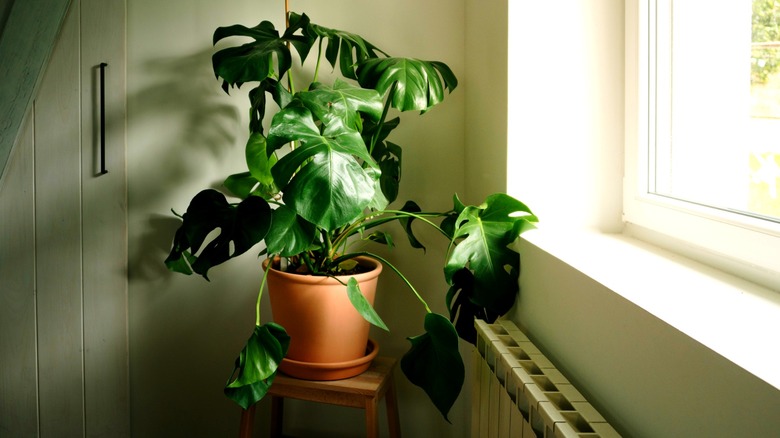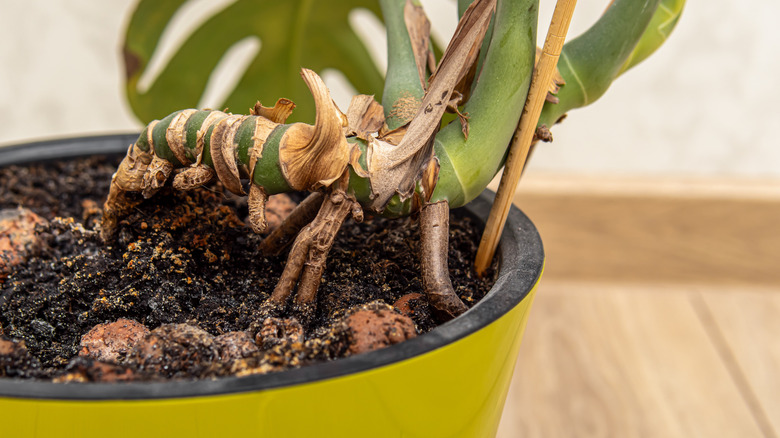Hack Your Monstera Plant To Make Its Own Support System
You know your Monstera deliciosa is full of surprises. You have, after all, been raising it since it was just a plantling. You might have waited months or even years to witness the unfurling of its first fenestrated (hole-punctured) leaf, a characteristic that gives this houseplant the endearing moniker of Swiss cheese plant. As your greenery continues to mature, though, a problem emerges: The stems become floppy and can't support the large leaves. Desperate to keep your beloved monstera from keeling over, you look to the internet for answers. And boy, do you get answers!
Products purporting to prop up your monstera flood the search results. Don't get us wrong, advice that says you should be staking your monstera is accurate. But your trendy plant also happens to have its own built-in support system that helps it grow taller and access more nutrients to better produce those big, beautiful slotted leaves. The secret lies in what many monstera owners are tempted to remove — aerial roots. As a monstera plant matures, brown, woody roots sprout from the main stem right at the soil line. They tend to grow in odd and unpredictable ways, including upwards or perpendicular to the ground. As such, some plant owners consider them unsightly and opt to cut them off. Doing so, however, is a missed opportunity in natural (and free) Swiss cheese plant support. Instead, you can encourage the aerial roots to burrow into the potting medium to improve your monstera's stature and ability to nourish itself.
How to use aerial roots to support your monstera plant
Monsteras are vining plants that rely on another plant or structure for support as they grow. In their native habitat, monsteras cling to tree trunks and branches. They attach themselves to their host using aerial roots that double as nutrient absorbers, taking food quite literally from their surroundings. This is why monsteras grown as houseplants need a stake or pole for support. (Did we mention you can build a moss pole to help your plants thrive with a genius pool noodle hack?) By encouraging your plant to grow aerial roots, you're not aiming to replace these artificial structures. Instead, you're helping to create a more robust root network and provide multifaceted support to your monstera.
You can achieve this by training the aerial roots to grow back down into the soil inside the plant's pot. The roots are pretty tough. Gently and slowly bend the root downwards as they grow and they should survive the process just fine, even if the outer skin of the root cracks. Once the tendril reaches the soil, dig a small hole and bury the last 2 to 3 inches. (It helps if you use the best soil for a thriving monstera.) You can also guide aerial roots onto a stake or pole for improved stem strength, plant stability, and nutrient collection.

